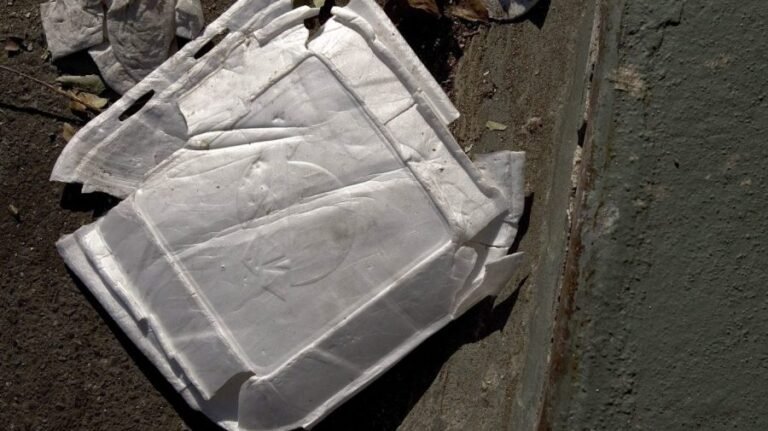First quarter fundraising reports released this week are offering a glimpse into what to expect, both in next year’s midterms and beyond.
Candidates and incumbents alike report quarterly fundraising filings to the Federal Election Commission (FEC), where contenders report how much they’ve raised, spent and have left in the bank. This fundraising quarter spans Jan 1. to March 31, and candidates had until Tuesday to report their first quarter haul.
The FEC reports underscore how the 2026 midterms are already underway as Democrats look to flip the House and as states like Georgia and North Carolina tee up some closely watched Senate races.
Here are five takeaways from the fundraising reports:
Populist Dems rake in money
In the last few weeks, Sen. Bernie Sanders (I-Vt.) and Rep. Alexandria Ocasio-Cortez (D-N.Y.) have been crisscrossing the country to meet with voters in their “Fighting Oligarchy” tour, drawing in some cases tens of thousands of attendees.
Their FEC reports for this past quarter suggest that enthusiasm isn’t waning anytime soon. Sanders posted a whopping $11.5 million between January and March, while Ocasio-Cortez brought in $9.6 million during that same period. It’s an extraordinary amount of money for either a senator or House member to raise in one quarter, especially since it’s an off-cycle year.
Sen. Chris Murphy (D-Conn.), seen as a rising star within the party who has pushed for a more populist platform, also posted an $8 million haul. Progressive Rep. Ro Khanna (D-Calif.), floated as a potential 2028 contender, raised $3.7 million.
It’s worth noting, too, that neither Sanders nor Murphy is up for reelection next year. The Vermont progressive has signaled that this is likely to be his last term in the Senate.
Both sides are bringing in huge hauls
Overall, members of both parties brought in some impressive figures.
Democrats in the House raised significant cash, including new members like Rep. Eugene Vindman (D-Va.), who brought in $2 million during the first quarter, and cable news fixtures like Rep. Jasmine Crockett (D-Texas), who brought in $1.6 million.
Colorado state Rep. Manny Rutinel (D), who’s running for Rep. Gabe Evans’s (R-Colo.) seat, raked in $1.1 million.
But Republicans are keeping up with them. At least nine House Republicans who Democrats are targeting this cycle raked in seven-digit figures this past quarter. That’s to be expected in the cases of Reps. Andy Barr (R-Ky.) and Mike Lawler (R-N.Y.), as Barr is mulling a run for Sen. Mitch McConnell’s (R-Ky.) seat, while Lawler is likely to run against Gov. Kathy Hochul (D) in New York.
Barr raised $1.8 million and Lawler raised $1.4 million.
But those figures also include some competitive House districts represented by Republicans who are likely looking to stay in the lower chamber, including Reps. Ken Calvert (R-Calif.), who raised $1.3 million, and Juan Ciscomani (R-Ariz.), who raised $1.2 million.
The House GOP campaign arm has touted the strong fundraising dollars and cash on hand of swing-district Republican incumbents over frontline Democratic incumbents, saying the party is “running laps around” Democrats.
Competitive 2026 races are heating up
The FEC reports are already previewing some contested Senate primaries and general elections ahead of next year.
Sen. Jon Ossoff (D-Ga.), seen as one of Senate Republicans’ top pick-up opportunities this cycle, raised $11.1 million. Many prominent Georgia Republicans have yet to announce a bid — the party is waiting to see what Gov. Brian Kemp (R) does — but there’s fundraising information available on at least four potential GOP Senate contenders.
Rep. Majorie Taylor Greene (R-Ga.) reported raising roughly $655,000 this past quarter, while Rep. Buddy Carter (R-Ga.) raked in about $536,000. Rep. Mike Collins (R-Ga.) raised about $406,000, while Rep. Rich McCormick brought in about $288,000.
Most notably, however, Carter ended this last quarter with $3.4 million on hand; the three other Republicans each have a fraction of that in the bank.
Over in Louisiana, the contours of the Senate GOP primary are starting to take shape. Sen. Bill Cassidy (R-La.) brought in about $1 million between January and March while State Treasurer John Fleming reported $2.2 million, including $2 million he’s loaned himself.
In North Carolina, Sen. Thom Tillis (R-N.C.) reported $2.2 million. Because former Rep. Wiley Nickel (D-N.C.) announced his campaign against Tillis this month, the latest fundraising information won’t be available for him until July 15.
Durbin raises questions about his future
There’s been growing speculation that Sen. Dick Durbin (D-Ill.), the No. 2 Senate Democrat, may retire after this current term, and his latest fundraising haul is suggesting that’s likely.
Durbin raised only about $42,000 this first quarter and has $1.6 million cash on hand.
Meanwhile, several House Democrats that could run for his seat are stockpiling cash.
Rep. Robin Kelly (D-Ill.) raised roughly $186,000 with $2 million in the bank while Rep. Lauren Underwood (D-Ill.) raised around $392,000 and has $1.1 million cash on hand.
Those sums, however, are dwarfed by Rep. Raja Krishnamoorthi (D-Ill.), who raised $3 million this last quarter and has a whopping $19.4 million in the bank.
Cash pours into New Jersey gov race
Money is pouring into the New Jersey governor’s race to replace term-limited Gov. Phil Murphy (D), and House campaign filings are offering a picture of where some of that money is going.
Rep. Josh Gottheimer (D-N.J.), who’s running in the Democratic primary, has sent close to $10 million to the super PAC Affordable New Jersey, a group that’s supporting Gottheimer in the gubernatorial race.
Meanwhile, Rep. Mikie Sherrill (D-N.J.), who’s also running in the race, has channeled $127,500 to One Giant Leap PAC, a super PAC supporting her bid for the governor’s seat.
The Democratic primary in the governor’s race is June 10.


